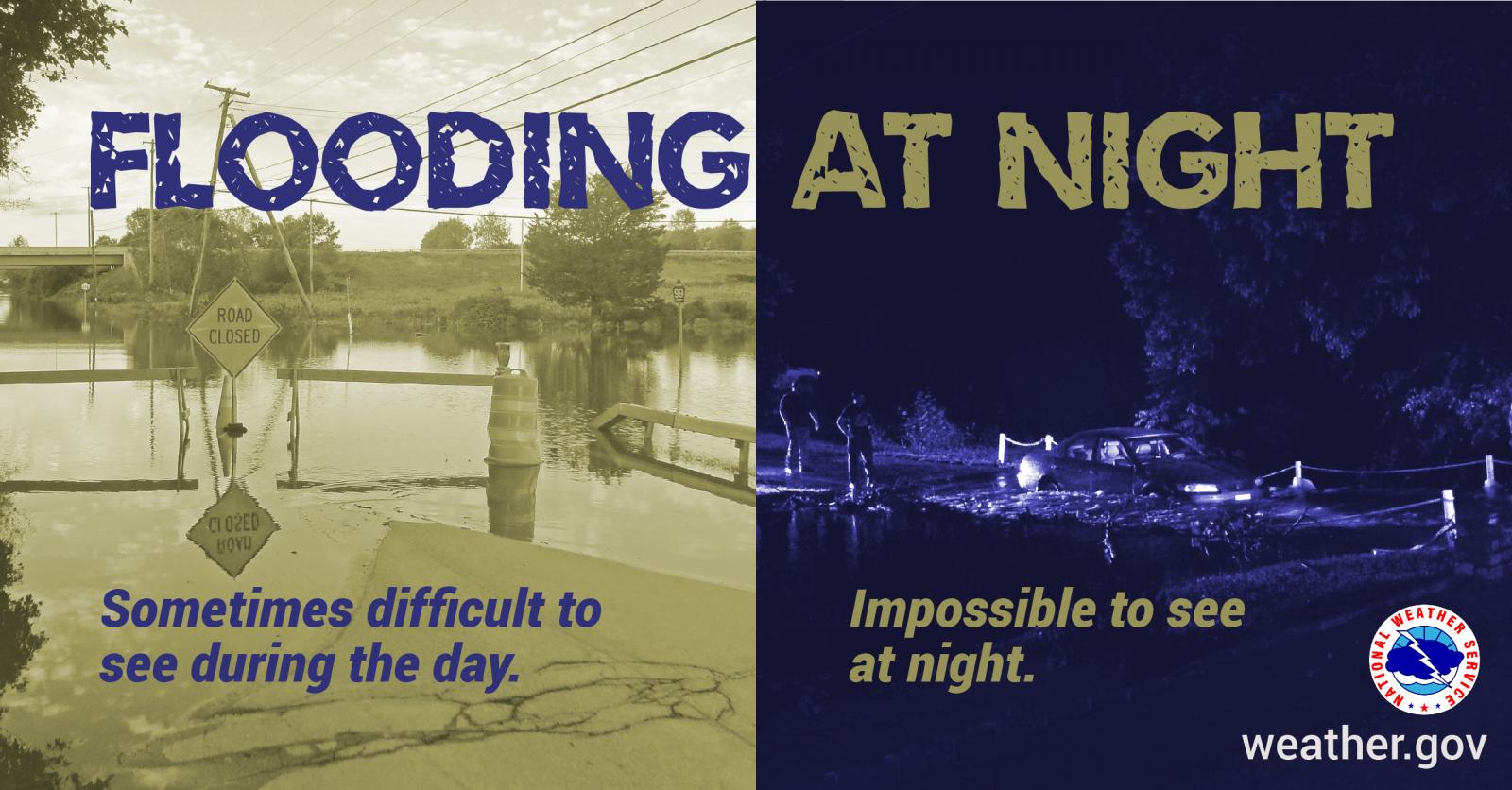Flood Warning: Stay Safe With NWS Safety Tips

Table of Contents
Recognizing the Signs of an Impending Flood Warning
A flood warning signifies that flooding is occurring or is imminent. It's crucial to understand the different types of warnings issued by the NWS:
- Flash Flood Warning: A sudden, rapid, and dangerous rise in water levels, often with little to no warning.
- Flood Warning: A prolonged rise in water levels, often over several hours or days.
Recognizing the visual indicators of potential flooding is equally important:
- Rapidly rising water levels in rivers, streams, or creeks.
- Fast-moving water, even in normally calm areas.
- Saturated ground unable to absorb additional rainfall.
- Unusual rainfall patterns, including heavy downpours in a short period.
Monitoring weather reports and official sources is vital for staying informed:
- Check the NWS website regularly for updates and forecasts.
- Sign up for weather alerts on your smartphone through your local meteorological service.
- Listen to local news broadcasts for urgent weather information and any issued flood warnings.
- Be aware of unusual rainfall patterns in your area; this is often a key indicator.
Evacuation Procedures During a Flood Warning
When a flood warning is issued, immediate evacuation is paramount. Don't delay; your life is more valuable than any possessions.
- Know your evacuation route: Familiarize yourself with designated evacuation routes and shelters in advance. These are often mapped out by local authorities.
- Gather essential documents and supplies: Pack a "go-bag" including important documents (ID, insurance papers), medications, food, water, and other necessities.
- Secure your home as much as possible: Move valuable items to upper floors or secure them appropriately. Take necessary steps to minimize potential flood damage to your property.
- Follow instructions from emergency personnel: Obey all instructions from law enforcement, firefighters, and other emergency responders. Their guidance is crucial for your safety during a flood warning.
Essential Flood Safety Tips at Home During a Flood Warning
Even if you don't evacuate, taking precautions at home is crucial:
- Move valuables to higher ground: Move furniture, appliances, and other valuables to the upper floors of your home. Protect electronics by unplugging them and placing them in waterproof containers.
- Understand the dangers of floodwaters: Floodwaters can be contaminated with sewage, chemicals, and debris. Avoid contact at all costs.
- Protect your home: Unplug electrical appliances, turn off gas and water supplies at the main shutoff valves to prevent damage and potential hazards. If possible, secure your doors and windows.
- Never attempt to drive or walk through floodwaters: Floodwaters can hide dangerous debris, strong currents, and deep water. Even a few inches of water can sweep you off your feet.
Post-Flood Safety: What to Do After a Flood Warning
The dangers don't end when the flood warning is lifted. Floodwaters recede, leaving behind potential hazards:
- Check for structural damage: Inspect your home for structural damage, including foundation cracks and electrical issues. Don't enter your home until it has been deemed safe by authorities.
- Avoid contact with floodwater: Floodwater is contaminated and can cause disease. Wear protective gear, including boots and gloves, if you must enter flood-affected areas.
- Contact your insurance provider: Report any damage to your home or belongings to your insurance company as soon as possible.
- Report any damage to local authorities: Contact your local emergency services to report any damage or hazards in your area.
Staying Safe During Flood Warnings – Key Takeaways and Next Steps
Staying safe during a flood warning requires preparedness and a swift response. Remember these key takeaways: understand the signs, evacuate when instructed, take home safety precautions, and be aware of post-flood dangers. Heeding flood warnings issued by the NWS is critical. Share this information with family, friends, and neighbors to help them prepare too.
Stay informed about potential flood warnings in your area by regularly checking the NWS website ([link to NWS website]) and signing up for weather alerts. Your safety is paramount! You can also find additional resources and preparedness information from FEMA ([link to FEMA website]).

Featured Posts
-
 Blamaz Prokuratur Dlaczego Unikaja Pytan W Polsce24
May 26, 2025
Blamaz Prokuratur Dlaczego Unikaja Pytan W Polsce24
May 26, 2025 -
 Flash Flood Emergency Response A Step By Step Guide
May 26, 2025
Flash Flood Emergency Response A Step By Step Guide
May 26, 2025 -
 Sevilla Atletico Madrid 1 2 Mac Sonucu Goller Ve Oenemli Olaylar
May 26, 2025
Sevilla Atletico Madrid 1 2 Mac Sonucu Goller Ve Oenemli Olaylar
May 26, 2025 -
 Moto Gp Di Brasil Goiania Dan Sirkuit Ayrton Senna Tuan Rumah Balapan Tahun Depan
May 26, 2025
Moto Gp Di Brasil Goiania Dan Sirkuit Ayrton Senna Tuan Rumah Balapan Tahun Depan
May 26, 2025 -
 Addressing Investor Anxiety Bof As View On Stretched Stock Market Valuations
May 26, 2025
Addressing Investor Anxiety Bof As View On Stretched Stock Market Valuations
May 26, 2025
Latest Posts
-
 34 Million Euro Millions Draw Live Results For Tuesday April 15th
May 28, 2025
34 Million Euro Millions Draw Live Results For Tuesday April 15th
May 28, 2025 -
 Winning Euro Millions Tickets Irish Lotto Confirms Locations Of Two Six Figure Prizes
May 28, 2025
Winning Euro Millions Tickets Irish Lotto Confirms Locations Of Two Six Figure Prizes
May 28, 2025 -
 Six Figure Euro Millions Wins For Two Lucky Irish Players Where The Winning Tickets Were Sold
May 28, 2025
Six Figure Euro Millions Wins For Two Lucky Irish Players Where The Winning Tickets Were Sold
May 28, 2025 -
 Check Euro Millions Results 34m Draw On Tuesday April 15th
May 28, 2025
Check Euro Millions Results 34m Draw On Tuesday April 15th
May 28, 2025 -
 Irish Euro Millions Winner Sought Ticket Sold In Shop Name Location
May 28, 2025
Irish Euro Millions Winner Sought Ticket Sold In Shop Name Location
May 28, 2025
